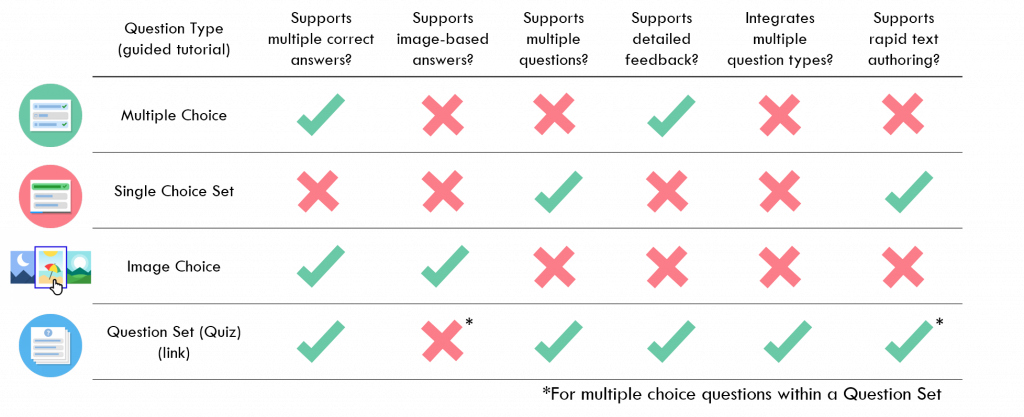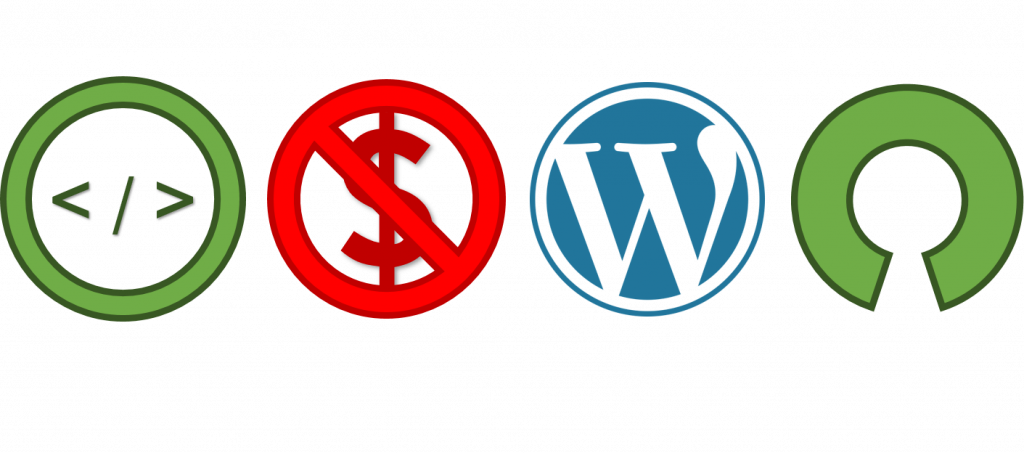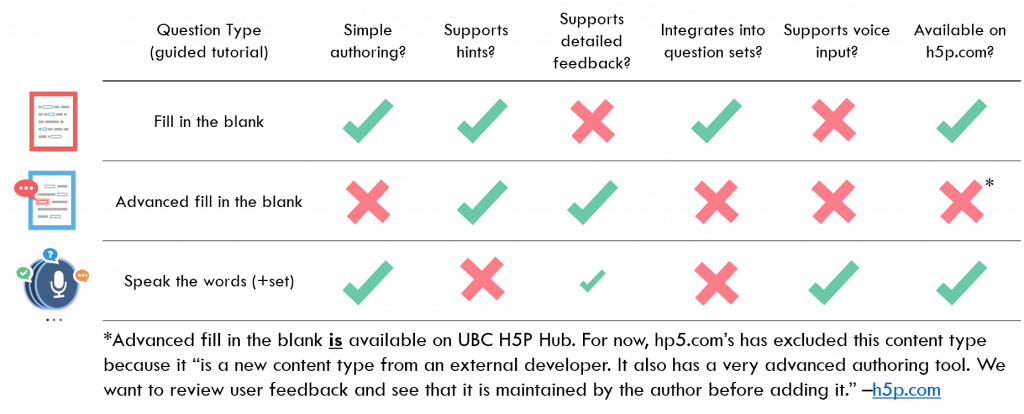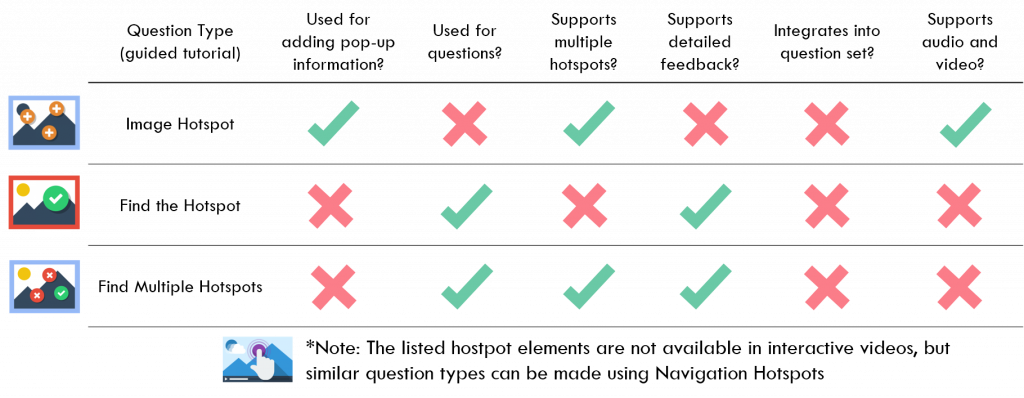Accessing H5P
Multiple Choice Style Questions

Resources: Multiple Choice
We will work together to recreate the question below:
Image

Alternative text: Green circle surrounding coding symbol; Red no symbol over dollar sign; WordPress logo; Open Source logo
Question: Which of the following statements is / are TRUE of H5P?
Option 1 (correct): H5P is open-source.
Tip: Open-source means that you are free to copy, study, and change the code to suit your needs.
Feedback if selected: H5P is open-source which means that you are free to copy, study, and change the code to suit your needs.
Option 2 (correct): H5P is free.
Feedback if selected: Yes! If you are able to host it on a server, H5P is completely free.
Option 3 (incorrect): H5P only works on WordPress.
Feedback if selected: H5P works across a variety of platforms including WordPress, Canvas, Moodle, Drupal, Brightspace and Blackboard
Option 4 (incorrect): H5P requires you to know how to code.
Feedback if selected: H5P stands for HTML 5 Package. Although H5P is based in HTML 5, you do not need to know how to code in order to make use of H5P.
Resources: Question Set
We will work together to recreate the question below
Question 1: How many H5P content types are there?
Option 1 (incorrect): 15
Tip: All content types are listed at h5p.org
Feedback if selected: There are more than 15 content types. Try again.
Option 2 (incorrect): 32
Feedback if selected: There are more than 32 content types. Try again.
Option 3 (correct): 49
Feedback if selected: Yes! Currently there are 49 content types but more are added frequently.
Review
How to create Multiple Choice elements (guided walkthrough)
Here’s an interactive tutorial
** Best experienced in Full Screen (click the icon in the top right corner before you begin) **
How to create Question Set (Quiz) elements (guided walkthrough)
Here’s an interactive tutorial
** Best experienced in Full Screen (click the icon in the top right corner before you begin) **
Short Answer Style Questions

Resources: Fill in the Blank
We will work together to recreate the question below
Question: Note-taking is beneficial because it has benefits for both __________ and __________ information.
Blank 1: encoding
Tip: What is the first step in getting information into your mind?
Blank 2: storing
Tip: What is the process of keeping information in memory?
Review
How to create Fill in the Blank elements (guided walkthrough)
Hotspot Style Content and Questions

Resources: Find the Hotspot
We will work together to recreate the question below
Question: Click on the button that allows you to set legal restrictions on who may use your H5P element and how they may use it.
Image:
Feedback
Over “Metadata” (correct): Correct. The metadata is where you set the license for your H5P content. For some of the more common license types and what they entail, see https://creativecommons.org/licenses/
Over “Allow users to download the content” (incorrect): This option allow people to download your H5P element and import it into their instance of H5P. The type of license that you set will have important implications for downloading your work. Where might you set the type of license you want to use?
Over “Display embed button” (incorrect): The embed code allows people to copy and place your H5P element in their website / LMS. How / when you can do this is contingent on the license that you choose. Where might you choose which license you want for your H5P element?
Over “Display Copyright button” (incorrect): Clicking on this option will display what type of license you have set for your H5P element. It is not where you choose the license type. Try again!
Review
How to create Find the Hotspot elements (guided walkthrough)
Here’s an interactive tutorial
** Best experienced in Full Screen (click the icon in the top right corner before you begin) **
Card Style Questions

Resources
We will work together to recreate the flashcard set below
Flashcard 1:
Image:
Metadata: ds_30, soft-4875297_1920, https://pixabay.com/photos/soft-toy-blank-childhood-toys-4875297/
Question: Recalling information from memory is known as _____________________ practice.
Answer: retrieval
Flashcard 2:
Question: What is the most popular study technique used by students?
Answer: rereading
Review
How to create Flashcard elements (guided walkthrough)